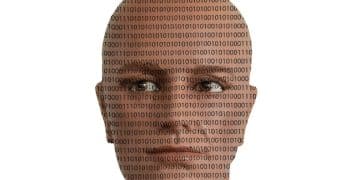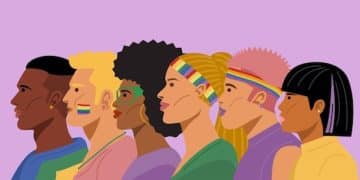Analyzing Media’s Role in Shaping Social Justice Perceptions: A 2025 Review

Analyzing the Role of Media Representation in Shaping Public Perceptions of Social Justice Issues: A 2025 Review reveals how media outlets influence societal understanding and attitudes towards fairness, equality, and human rights, impacting policy and social change.
The media landscape plays a critical role in shaping public opinion on various social issues. In 2025, it’s crucial to understand how media representation influences our perceptions of social justice. This article delves into analyzing the role of media representation in shaping public perceptions of social justice issues: a 2025 review.
From news outlets to social media platforms, the narratives presented can deeply affect how we view equality, fairness, and human rights. How are these perceptions crafted and what impact do they have on our society?
Understanding the Power of Media Representation
Media representation has always been a powerful force in shaping societal views. In the context of social justice, the way media frames issues can significantly influence public understanding and engagement.
Framing and Agenda-Setting
Framing involves selecting and highlighting certain aspects of an issue while downplaying others. Agenda-setting, on the other hand, determines which issues receive the most attention.
When media outlets focus on specific narratives, they create a perception of what is important and how it should be viewed. This can either promote or hinder progress toward social justice.
- Influence on Public Opinion: Media can sway public sentiment by emphasizing certain perspectives.
- Policy Implications: Policy decisions can be influenced by media-driven public perceptions.
- Social Movements: Media attention can amplify the reach and impact of social movements.

The power of media lies in its ability to shape public discourse, but it’s crucial to recognize the potential for bias and manipulation. Analyzing the role of media representation in shaping public perceptions of social justice issues: a 2025 review should critically assess these dynamics.
How Media Frames Social Justice Issues
The framing of social justice issues can take many forms, each with its own implications. Certain portrayals can reinforce stereotypes or promote empathy and understanding.
Stereotypes and Misrepresentations
One common issue is the perpetuation of stereotypes. Media may unintentionally reinforce negative stereotypes about marginalized groups, leading to increased prejudice.
Misrepresentations often occur when complex social issues are oversimplified. This can lead to misunderstandings and a lack of support for necessary reforms.
- Racial Stereotypes: Media has historically perpetuated negative racial stereotypes, impacting public perception of different ethnic groups.
- Gender Bias: Gender bias in reporting can reinforce harmful stereotypes about men and women, affecting gender equality efforts.
- Socioeconomic Disparities: The media’s portrayal of poverty and wealth can influence public attitudes towards socioeconomic justice.
It’s essential to critically evaluate the media’s framing of social justice issues to identify and address potential biases. Analyzing the role of media representation in shaping public perceptions of social justice issues: a 2025 review involves looking at these biases and their impact.
The Impact of Social Media on Perceptions
Social media has revolutionized the way information is shared and consumed. While it offers opportunities for marginalized voices to be heard, it also presents challenges.
Echo Chambers and Filter Bubbles
Social media algorithms often create echo chambers where users are primarily exposed to information that confirms their existing beliefs. This can reinforce biases and limit exposure to diverse perspectives.
Filter bubbles further exacerbate this issue by curating content based on user preferences, leading to a narrow and skewed view of social justice issues.
- Amplification of Extremist Views: Social media can provide a platform for extremist views, influencing public discourse.
- Spread of Misinformation: The rapid spread of false or misleading information can undermine trust in credible sources.
- Cyberbullying and Online Harassment: marginalized groups are often targeted by online harassment, creating a hostile environment.
Social media’s dynamic nature requires careful consideration as we assess its influence on public perceptions. Analyzing the role of media representation in shaping public perceptions of social justice issues: a 2025 review must include a close examination of social media trends.
Promoting Fair and Accurate Representation
Achieving fair and accurate representation requires a multi-pronged approach involving media outlets, advocacy groups, and individual consumers.
Diversifying Media Ownership and Representation
One of the most effective ways to improve media representation is to diversify ownership and representation within media organizations. This ensures a broader range of voices and perspectives are included.
Encouraging diverse hiring practices and promoting inclusive storytelling are crucial steps in creating more equitable media landscape.
- Support Independent Media: Supporting independent media outlets can provide alternative perspectives and challenge mainstream narratives.
- Promote Media Literacy: Educating the public about media bias and manipulation can empower individuals to think critically.
- Engage with Media Outlets: Contacting media outlets to voice concerns about biased reporting can encourage more responsible coverage.

By actively promoting diversity and accountability in media, we can foster a more informed and just society. It is a fundamental component of analyzing the role of media representation in shaping public perceptions of social justice issues: a 2025 review.
The Role of Education and Advocacy
Education and advocacy efforts are essential in combating media bias and promoting media literacy. By equipping individuals with the skills to critically analyze media content, we can create a more informed and engaged citizenry.
Media Literacy Programs
Media literacy programs teach individuals how to evaluate the credibility and bias of media sources. These programs can help people distinguish between fact and fiction and make informed decisions about the information they consume.
Advocacy groups play a critical role in holding media outlets accountable for biased reporting. By raising awareness and advocating for fair representation, these groups can influence media practices.
- Curriculum Development: Integrating media literacy into school curriculums can ensure that young people develop critical thinking skills.
- Community Workshops: Offering community workshops on media literacy can reach individuals of all ages and backgrounds.
- Online Resources: Providing online resources can offer accessible information and tools for media analysis.
By combining educational initiatives with advocacy efforts, we can create a culture of critical engagement with media. This is a critical aspect of analyzing the role of media representation in shaping public perceptions of social justice issues: a 2025 review because it promotes active and informed participation.
Future Trends in Media and Social Justice
Looking ahead, several trends are likely to shape the relationship between media and social justice. These include advancements in technology, changes in media consumption habits, and growing awareness of social issues.
Artificial Intelligence and Algorithmic Bias
Artificial intelligence (AI) is increasingly used to curate and distribute media content. However, AI algorithms can perpetuate existing biases if they are not carefully designed and monitored.
Addressing algorithmic bias requires transparency and accountability in AI development. It also involves ensuring that diverse voices are included in the design and testing of AI systems.
- Ethical AI Development: Promoting ethical AI development practices can minimize the risk of algorithmic bias.
- Transparency and Accountability: Requiring transparency and accountability in AI systems can help identify and address biases.
- Diverse AI Teams: Ensuring diverse teams develop AI systems can bring different perspectives to the table.
As we navigate the complexities of the digital age, it’s imperative to anticipate and address emerging challenges. Analyzing the role of media representation in shaping public perceptions of social justice issues: a 2025 review demands a future-oriented perspective.
| Key Point | Brief Description |
|---|---|
| 📢 Media Framing | How media presents issues affects public opinion. |
| 📱 Social Media Influence | Echo chambers and misinformation shape perceptions. |
| 📚 Media Literacy | Education combats bias and promotes informed citizenry. |
| 🤖 AI & Bias | Algorithmic bias in AI needs careful monitoring. |
Frequently Asked Questions
The media frames issues, setting the agenda and influencing how the public perceives fairness, equality, and human rights. Analyzing the role of media representation in shaping public perceptions of social justice issues: a 2025 review highlights this influence.
Stereotypes in media can reinforce harmful biases and misrepresent marginalized groups, leading to prejudice and hindering social progress. It is essential to challenge these misrepresentations.
Social media echo chambers limit exposure to diverse perspectives, reinforcing existing biases and creating polarized views on social justice. Analyzing the role of media representation in shaping public perceptions of social justice issues: a 2025 review shows this effect.
Media literacy programs equip individuals with the skills to critically analyze media content, recognize bias, and make informed decisions. These skills promote a more informed and engaged citizenry.
Mitigating AI bias involves ethical AI development, transparency, and diverse AI teams. These steps help ensure AI algorithms do not perpetuate existing stereotypes and promote fair representation. Analyzing the role of media representation in shaping public perceptions of social justice issues: a 2025 review includes this analysis.
Conclusion
In conclusion, the media plays a pivotal role in shaping public perceptions of social justice issues. Analyzing the role of media representation in shaping public perceptions of social justice issues: a 2025 review reveals both the opportunities and challenges in achieving fair and accurate portrayals.
By promoting media literacy, diversifying media ownership, and addressing algorithmic bias, we can strive towards a more informed and just society. It is essential to critically engage with media content and advocate for responsible reporting.





